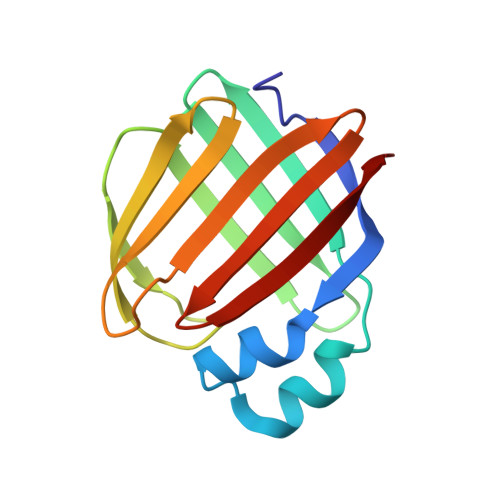Design of Large Stokes Shift Fluorescent Proteins Based on Excited State Proton Transfer of an Engineered Photobase.
Santos, E.M., Sheng, W., Esmatpour Salmani, R., Tahmasebi Nick, S., Ghanbarpour, A., Gholami, H., Vasileiou, C., Geiger, J.H., Borhan, B.(2021) J Am Chem Soc 143: 15091-15102
- PubMed: 34516091
- DOI: https://doi.org/10.1021/jacs.1c05039
- Primary Citation of Related Structures:
7LSQ, 7MFX, 7MFY, 7MFZ - PubMed Abstract:
The incredible potential for fluorescent proteins to revolutionize biology has inspired the development of a variety of design strategies to address an equally broad range of photophysical characteristics, depending on potential applications. Of these, fluorescent proteins that simultaneously exhibit high quantum yield, red-shifted emission, and wide separation between excitation and emission wavelengths (Large Stokes Shift, LSS) are rare. The pursuit of LSS systems has led to the formation of a complex, obtained from the marriage of a rationally engineered protein (human cellular retinol binding protein II, hCRBPII) and different fluorogenic molecules, capable of supporting photobase activity. The large increase in basicity upon photoexcitation leads to protonation of the fluorophore in the excited state, dramatically red-shifting its emission, leading to an LSS protein/fluorophore complex. Essential for selective photobase activity is the intimate involvement of the target protein structure and sequence that enables Excited State Proton Transfer (ESPT). The potential power and usefulness of the strategy was demonstrated in live cell imaging of human cell lines.
Organizational Affiliation:
Michigan State University, Department of Chemistry, East Lansing, Michigan 48824, United States.
















